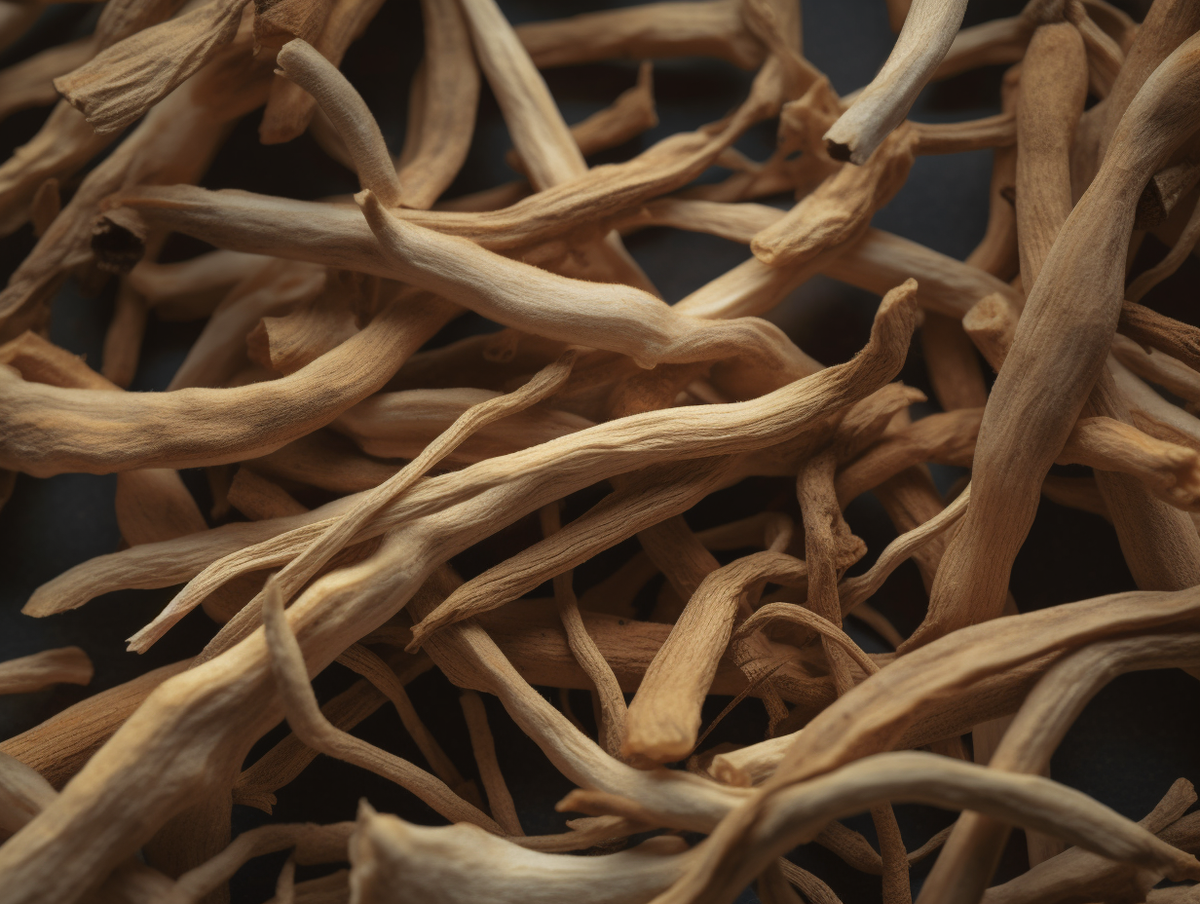Ashwagandha
- Mushrooms & Roots
Ashwagandha, scientifically known as Withania somnifera, is a popular herb used in traditional Ayurvedic medicine, which originated in India. It is also commonly referred to as Indian ginseng or winter cherry. The name "ashwagandha" is derived from the Sanskrit words "ashwa," meaning horse, and "gandha," meaning smell, as the root of the plant has a distinct odor similar to that of a horse.
Ashwagandha, an adaptogen, plays a vital role in stress management and balance. It provides various health benefits, including stress reduction by calming effects, potential improvement in cognitive function and memory, increased energy levels, stamina, and overall vitality. Additionally, ashwagandha serves as a natural remedy for sleep disorders, promoting restful sleep. Furthermore, it may have an impact on hormone levels, especially cortisol, known as the stress hormone. Overall, ashwagandha's versatile properties make it valuable for enhancing well-being and addressing different aspects of health.
References:
Akhgarjand, Camellia, et al. "Does Ashwagandha supplementation have a beneficial effect on the management of anxiety and stress? A systematic review and meta-analysis of randomized controlled trials." Phytotherapy Research, vol. 36, no. 11, 2022, pp. 4115-4124. DOI: 10.1002/ptr.7598.
Choudhary, Dnyanraj, et al. "Efficacy and Safety of Ashwagandha (Withania somnifera (L.) Dunal) Root Extract in Improving Memory and Cognitive Functions." Journal of Dietary Supplements, vol. 14, no. 6, 2017, pp. 599-612. DOI: 10.1080/19390211.2017.1284970.
Cheah, Kae Ling, et al. "Effect of Ashwagandha (Withania somnifera) extract on sleep: A systematic review and meta-analysis." PLoS One, vol. 16, no. 9, 2021, e0257843. DOI: 10.1371/journal.pone.0257843.
Baker, Cynthia, et al. "The Perceived Impact of Ashwagandha on Stress, Sleep Quality, Energy, and Mental Clarity for College Students: Qualitative Analysis of a Double-Blind Randomized Control Trial." Journal of Medicinal Food, vol. 25, no. 12, 2022, pp. 1095-1101. DOI: 10.1089/jmf.2022.0042.
